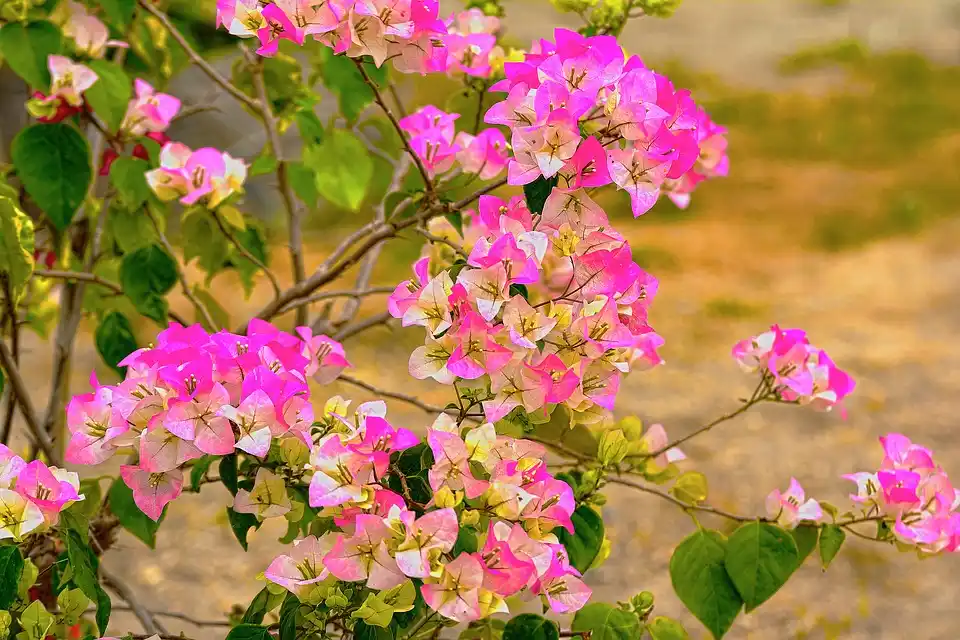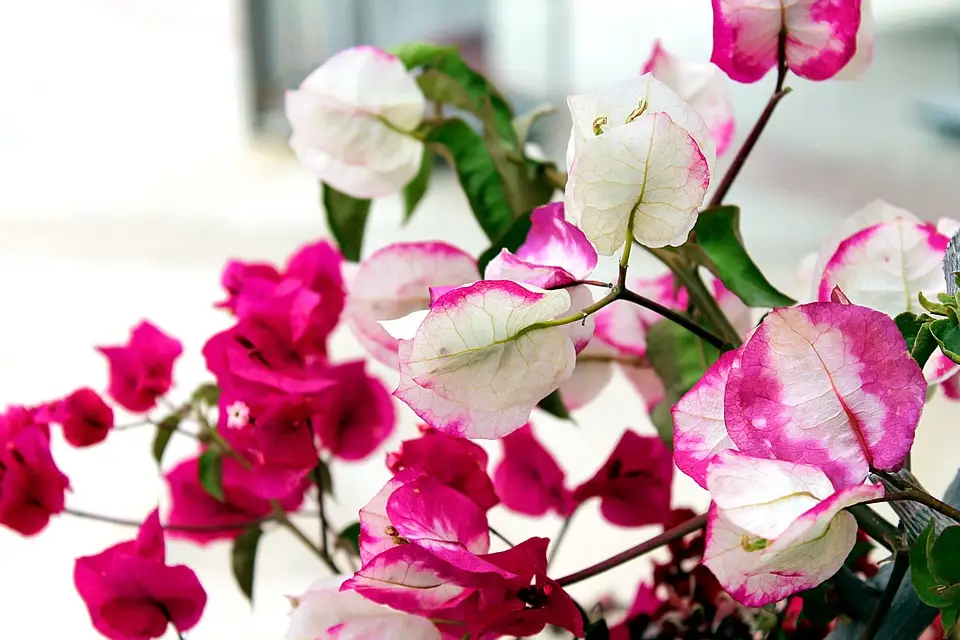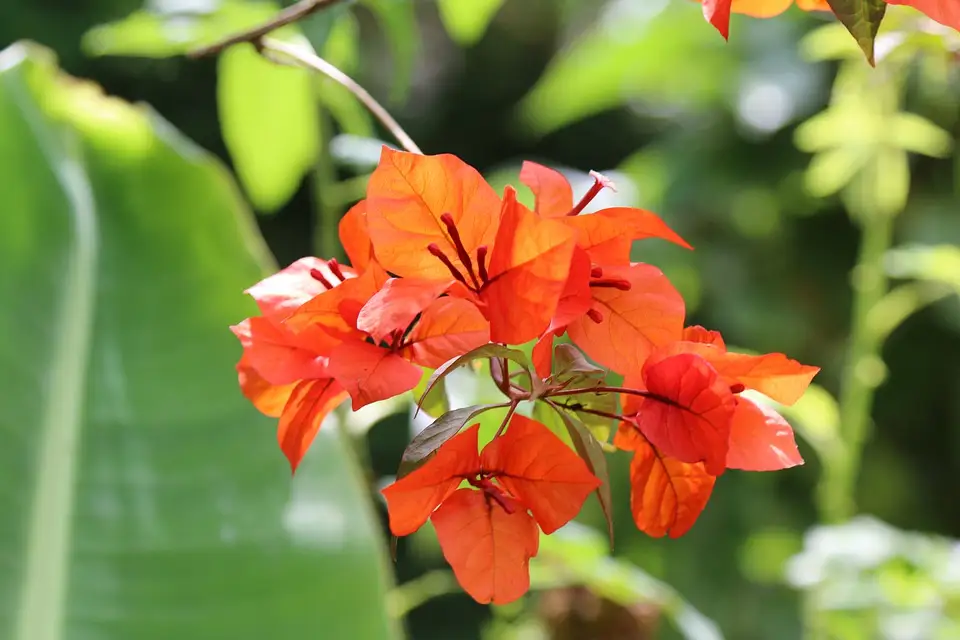How to Grow Bougainvillea Bonsais from Cuttings
Bougainvillea is an ornamental climbing shrub popular in the passionate heat of the tropics. Vibrant paper-thin bracts surround their modest creamy flowers in the most alluring colors. The stunning hues of bougainvilleas add so much character to the natural world, and when grown as bonsais, the same ethereal beauty can be brought effortlessly into the home.
While growing shrubbery like bougainvilleas from seeds is fairly easy, there may be more advantages to growing these beauties from cuttings or grafting.
Why Grow Bougainvillea from Cuttings?
Growing bougainvilleas from cuttings is a way to ensure the quality of the new plant. Seed growth introduces an entirely new plant to your garden, whereas cuttings are taken from a plant you already know is thriving.
The new plant will likely retain any special characteristics that your bougainvillea shrub has, like being particularly bushy or hardy. Bougainvilleas propagated with cuttings usually also grow to maturity and flower faster than seeds.
Types of Cuttings
There are numerous ways you can grow bougainvilleas from cuttings. Below we cover the different places you can harvest cuttings from and how to go about doing it correctly.
Stem Cuttings
In the broader terms of horticulture, cuttings can be taken from either woody flora or herbaceous plants. Trees and shrubbery are known as woody flora, while herbaceous plants are all types of houseplants and garden flowers. Because plants usually develop harder and stronger new growths in the warmer months, not all cuttings will root properly.
Cuttings can be harvested from herbaceous plants year-round because their stems are softer and more supple. It’s handy to keep in mind, though, that you should only take cuttings while a plant is actively growing. While herbaceous plants are soft year-round, not all herbaceous plants are perennial.
Softwood Cuttings
These are Bougainvillea cuttings taken from the soft, fresh growth of woody plants. Ideally, softwood cuttings are harvested between May and July just as the plants are beginning to harden. If you’re looking for softwood cuttings, go for shoots that easily snap when they are bent. Another way to tell softwood and hardwood apart is that the leaves on softwood cuttings aren’t fully mature yet.
To harvest softwood Bougainvillea cuttings from your shrub, look for parts of the shrub that aren’t green but also aren’t overly woody yet. Harvest your cuttings at lengths between four to five inches for the best results. While May and July are optimal times for most plants, softwood cuttings can be taken from bougainvilleas at any time of the year.
Semi-hardwood Cuttings
Semi-hardwood Bougainvillea cuttings are harvested after the wood has matured in its current season. You’ll know semi-hardwood from softwood because the plant’s leaves will be full size, and the wood will be firm. For most plants, the optimal time to harvest semi-hardwood cuttings is mid-July to early in the fall.
Most broadleaf evergreen plants can be propagated using semi-hardwood cuttings. As bougainvillea is a broadleaf evergreen climbing shrub or vine, semi-hardwood cuttings would work fine if harvested correctly.
Hardwood Cuttings
Hardwood cuttings can be thought of as finely aged wine. These are parts of the tree that were freshly sprouted shoots the summer before they are harvested. The ideal time to take hardwood cuttings is winter, when the plant is still in its dormant phase.
Another good time would be early in the spring, technically the plant will still be dormant, and the hardwood cuttings would be ripe for the taking. Hardwood cuttings are a great way to propagate deciduous shrubs. These are shrubs like bougainvilleas that lose their leaves in the winter in a process called abscission.
Rooting Bougainvillea Cuttings
Now that we’ve covered all the groundwork of growing bougainvillea cuttings let’s jump into the actual process. Rooting bougainvilleas from cuttings is a relatively easy process. It can even be done by amateur horticulturalists or anyone looking to dabble in the magic of bringing lush, vibrant new life into the world.
Step 1 – Soil
The soil used in rooting bougainvillea cuttings should not retain water. This is because bougainvilleas have relatively thin roots and need adequate air circulation to thrive. It’s important to remember that these are also drought-resistant plants, so the soil you use should be well-draining.
Soils to avoid would be any kind of mixes that contain peat. The presence of peat in the soil you root your bougainvilleas in will likely promote root rot. Any other water-retaining substances are also not recommended for healthy bougainvillea rooting. If you root your bougainvillea in pots, do not use saucers, this could result in your new bougainvillea being waterlogged.
Step 2 – Harvesting Your Cuttings
As we established above, you can take softwood, semi-hardwood, or hardwood cuttings when harvesting stems from your bougainvillea. For softwood, take four to five-inch cuttings; for semi-Harwood and hardwood, you’ll want to increase the length of your cuttings to six to eight inches.
Cuttings should be about as thick as a pencil and should be taken just below one of the bumps in the wood; these are known as nodes. Use a sharp knife, or alternatively, pruning shears. Your cuttings should each have five to seven nodes; this is where the natural growth hormone of the plant is concentrated.
Step 3 – Preparing Your Bougainvillea Cuttings
Preparing the freshly harvested cuttings is essential to rooting the new bougainvillea shrub. A plant only has so much energy to expend on the growing process. If there are too many leaves to support, there likely won’t be enough energy to expend on root growth, and without roots, you won’t have a new bougainvillea.
It’s also why you never take a stem that has flowered, the bulk of the stem’s energy has already gone into producing vibrantly colored bracts, and there won’t be enough for rooting. Leaves also help with water evaporation, so a cutting with all its leaves intact will be losing water faster than a properly prepared cutting.
To avoid future issues with rooting the cuttings, remove all the bottom leaves. The bottom of the stem should be cut at an angle; any angle will do. The last step in preparation is to lightly scrape the lower part of the stem, somewhat exposing the fibrous internal structure. This wounds the stem slightly and promotes root growth. As with human muscles, to strengthen them, we need to injure them a little to be stronger than before. The area of the stem that you need to scrape is about one inch.
Step 4 – Planting
You should now make a hole in the soil of whichever pot you choose to root your bougainvillea in. The hole should be about as thick as a pencil and should extend all the way down to half an inch above the bottom of the pot.
Now you will take your cuttings and dip the lower inch into an appropriate rooting hormone for bougainvilleas. Research has found that the best rooting hormone for bougainvillea is a synthetic auxin hormone called IBA. IBA is a brilliant root stimulant and decreases propagation bench time and the risk of losing your cuttings. IBA also strengthens the plant’s ability to fight off diseases. IBA is available in the form of powder, liquid, and talc.
There are also a few natural options if you don’t want to or have immediate access to rooting hormones. Cinnamon, honey, aloe vera, apple cider vinegar, and even your own saliva have yielded good results with rooting all sorts of plants. The use of sweet products like honey isn’t a good idea if you have an ant problem, as the ants are likely to use your cuttings’ newly formed roots to sustain themselves.
Once you have dipped your cuttings into your chosen rooting hormone, commercial or otherwise, shake off the excess and insert the cuttings into the hole you made. Don’t push too hard on the cuttings and set them into place by pressing the soil around them with your hands. Don’t limit yourself to one cutting in a pot; use around four to five cuttings per pot for best results. It’s possible to propagate bougainvillea without using rooting hormones, especially if you use softwood cuttings.
Once you have your cutting situated comfortably in your pot, you’ll want to make a makeshift greenhouse with either a large plastic bottle cut in half or a clear plastic bag. Water the soil moderately before you tie the bag around the pot or place the half bottle over it. This will ensure that your cuttings have enough moisture to support their rooting phase, but not so much that root rot sets in. You won’t need to water your new little enclosed ecosystem until you have confirmed root growth.
The pot should be placed out of direct sunlight but where it can still benefit from strong light. You should only open the ecosystem up every ten to 12 days. You can spray the soil with water if the soil appears dry. Be stingy with water; however, you don’t want to cause your newly planted bougainvillea cuttings to rot.
Roots take approximately seven to ten weeks to develop roots. This largely depends on temperature. In areas where the average temperatures are toward the cooler side, applying moderate heat to the bottom of the pot will further stimulate root growth. This can be done with a heated water bottle.
You’ll know when your new bougainvillea plant starts to root because leaves will start growing. It’s safe to move your bougainvillea plant out of the rooting pot when four to six sets of vibrant green leaves are present. You can now remove the clear plastic bag or bottle completely.
Once your plant is out of its makeshift greenhouse, you can start watering it more frequently. The best practice would be light watering every day. Before you move your new plant out of its temporary home, you need to get it accustomed to the level of sunlight you want it to prosper in. Move your plant anywhere it can bask in the healthy glow of the morning sun. Keep it in this spot for about a week. Thereafter, your new little bougainvillea is ready to bask in the healthy glow of the direct sun.
Step 5 – Transplanting Your New Bougainvillea
You should leave the pot in full sun for about a week before you transplant your bougainvillea. Once it’s time to transplant, tap the sides of the pot to loosen the soil and roots so that you don’t tear or break any when you move your plant. Turn the pot upside down carefully into your palm. Rest the plant stems gently between your fingers and ease the entire plant, roots and all, out of the pot. Repot your new plant in a bigger or stick them straight into the ground.
Bougainvilleas Happy Place
Bougainvilleas are tropical beauties; this means that they thrive in the heat. Let your bougainvilleas drink in the brightest rays of the sun, and they’ll be vibrant and add that special colorful touch to your garden.
Final Word
Why not take advantage of the beauty of your new bougainvilleas and nurture them into the perfect bonsai? After all, you can only reap the magical benefits of bougainvillea shrubs when you’re outside, but in the form of a bonsai, you can drink in the mystical energies anywhere in your house.







